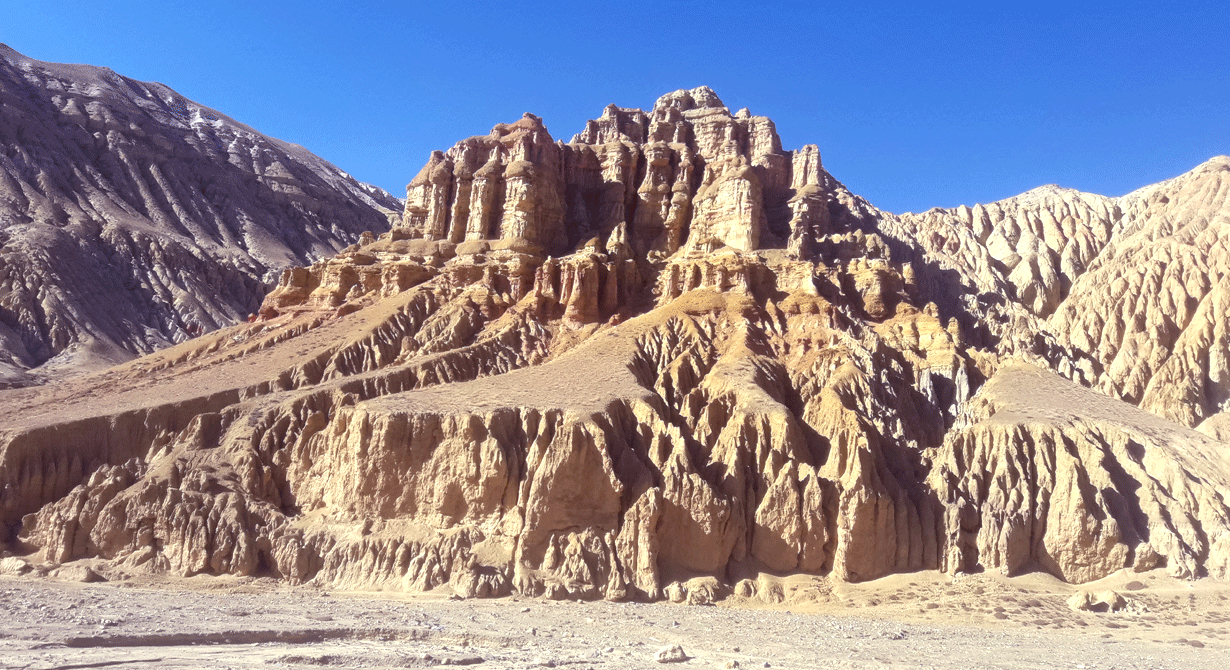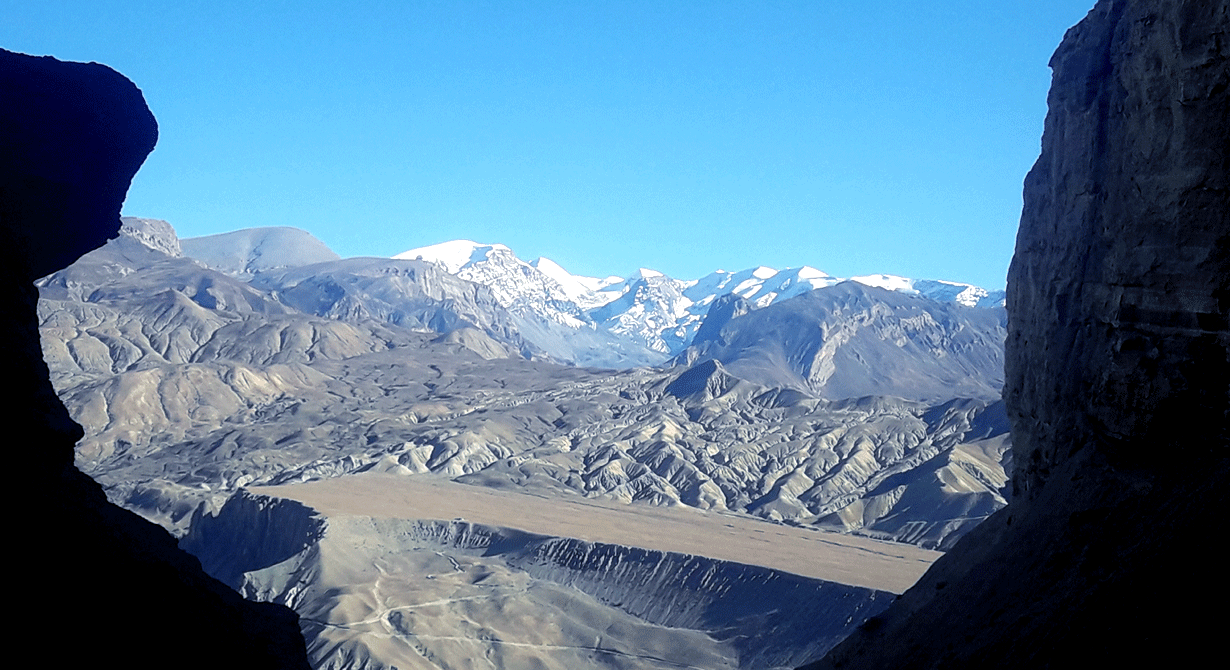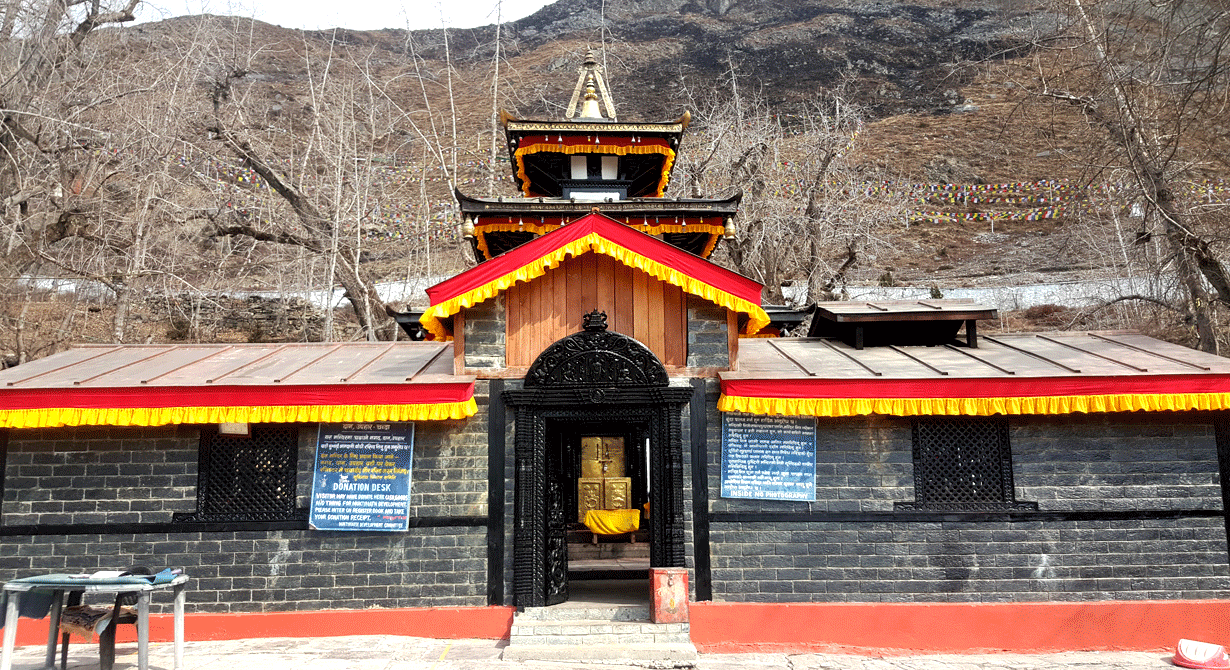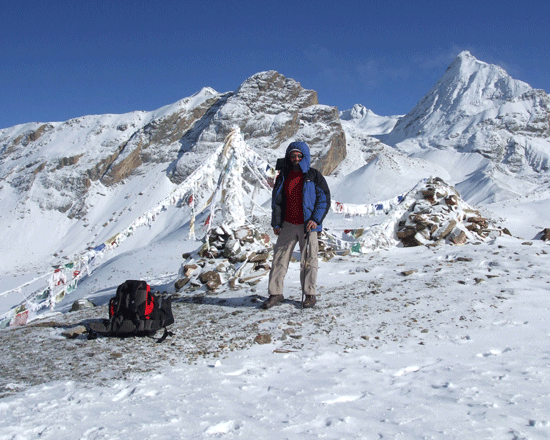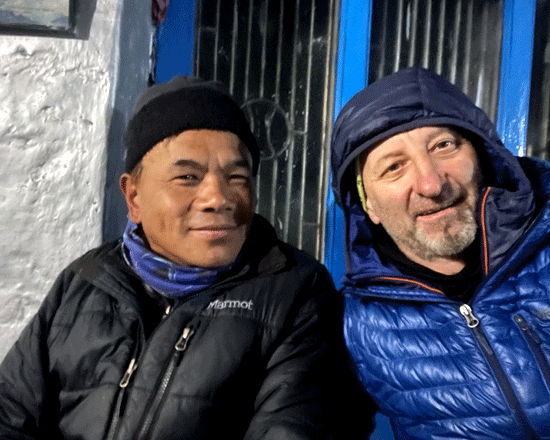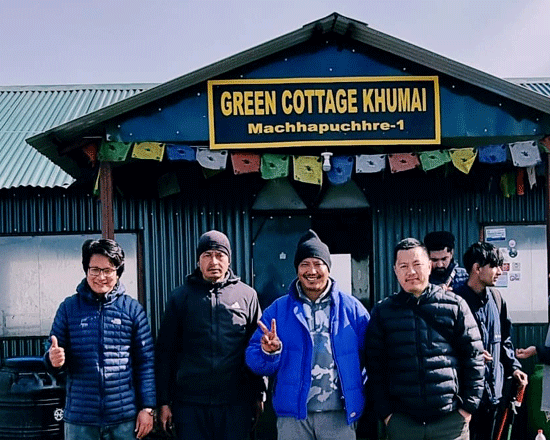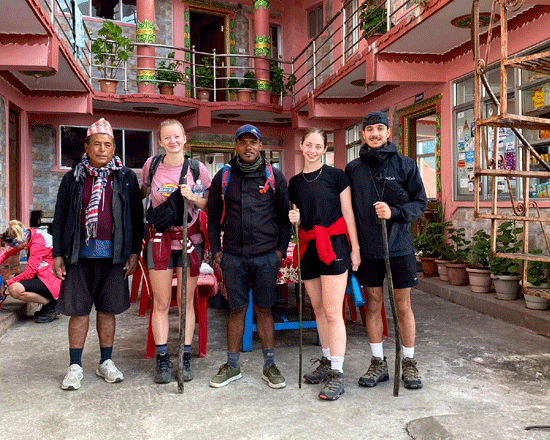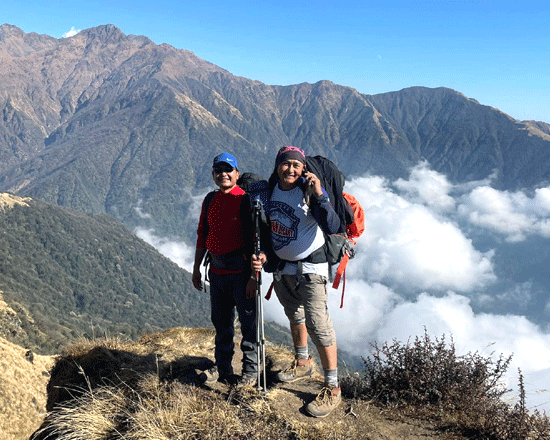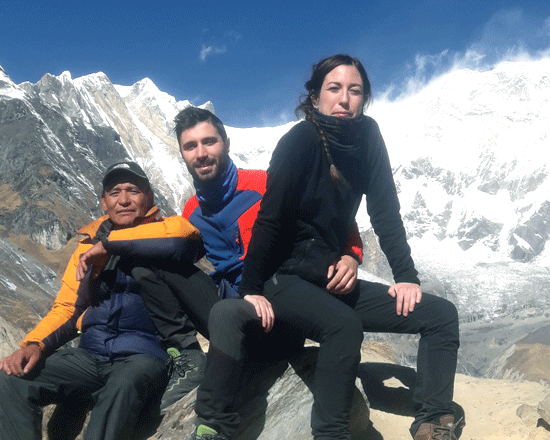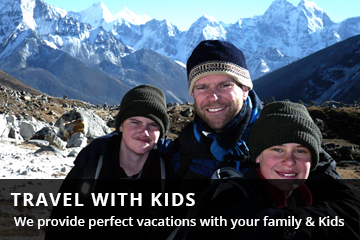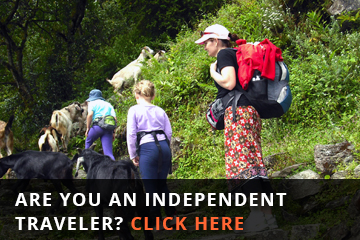Lower Mustang Trek
Lower Mustang Trek
Annapurna RegionTrip Facts
These treks are suitable for any walker looking for something a little more challenging and energetic. They are a combination of some longer and shorter walks and hill-walking experience is desirable. The duration is usually from 10 to 15 days. Following the up and down terrain of Nepal and walking to higher elevations contrasts these treks to those in the easy classification. However, you will be rewarded for your efforts with spectacular close-up views of glaciers and of the high Himalayas. Although the terrain is not difficult, some vigorous hiking experience is useful. There may be up to 6 hours a day on the trail and the elevation rises and falls from 800m/ 2624ft to 4000m/13210ft above sea level.
100%
Overview
Lower Mustang Trek
The Lower Mustang Trek is a popular trekking route in Nepal that takes you through the lower region of the Mustang district. It is a relatively easy trek and is suitable for people of all ages and fitness levels.
Lower Mustang Trek is a short and scenic trek that doesn’t require expensive permits like an Upper Mustang trek. There are many ancient monasteries and unique lifestyles in this region, which is the largest protected biodiversity area in Nepal. The Lower Mustang 5-day trek begins with a flight or drive to Jomsom via Pokhara. Trek around Jomsom to discover the stark, barren landscapes of Lower Mustang Trek dotted with Tibetan Buddhist cultural attractions. Trekking on this trek does not require high altitudes. Lower Mustang Trek is the best option for trekkers who are short of time and don’t wish to do a strenuous trek. It is a classic trek along the ancient route to Tibet through the Kali Gandaki valley and the gateway to Nepal’s secret treasure-Mustang.
Lower Mustang is not just about trekking and adventure. It is also about warm hospitality, a genuine smile, and the exotic culture and traditions of Mustang. Get to know locals, talk with them, and live like them for a while to truly come to know Jomsom as it is. In addition to the people, cuisine, and lifestyle of the Thakali, Gurung, and Lopa ethnicities, Jomsom hosts a unique Yartung festival in early September.
The annual Yartung horse racing event takes place over a week. This festival of men and horses racing in a Tibetan-influenced celebration is a must-see in Jomsom. In addition to the festival, learn about the culture of the Thakali. When you choose a homestay over a commercial lodge, you’ll have more chances to observe the culture, tradition, and lifestyle of the mountains up close.
Mustang Eco Museum in Jomsom
A Mustang Eco Museum is also located in Jomsom, where you can learn about the history, architecture, and culture of the area. This is the most ideal place to learn about local art, history, culture, and artifacts about Mustang. The Sakyapa Monastery, also known as Kagchode Thubten Sampheling Gompa at Kagbeni, dates back to the 14th century. A ridge overlooks the Kaligandaki River from the monastery.
Lower Mustang Trek is visibly and culturally different from other parts of Nepal. Tibet’s Buddhist traditions influence the culture, traditions, dialects, and clothing in this region. The lifestyle at lower elevations drastically changes as you gain altitude. Experience the diversity and richness of culture at Jomsom.
The village of Kagbeni is located in the valley of the Kali Gandaki River which is also the valley of the Lower Mustang trek, Kagbeni is considered one of the oldest villages in the Himalayas. Kagbeni is a village in the rural municipality of Baragubg Muktikshetra in the Gandaki province of western Nepal. Kagbeni is located at an altitude of 2,804 meters above sea level and has an area of 58.3 square kilometers. Kagbeni receives power from a hydroelectric plant along the nearby Kali Gandaki River. Despite being a small village, it has gained popularity and stardom throughout the world because of its natural beauty, culture, tradition, and landscape.
Kagbeni is one of the most famous religious sites for Hindu pilgrims. Kagbeni is known for its Pitri-Puja which is also known as Pitri-Moksastala. This ceremony is done to help remove the lost souls of the ancestors from hell and bring them to heaven, resulting in blessings for all members of the family. As a result, Kagbeni is an imperative place for Hindus to perform Pitri-sraddha. Many Hindu pilgrims stop at Kagbeni the day before heading to Muktinath to perform the final ritual for the departed souls of their ancestors.
Kagbeni is also an influential village among Buddhists. The village has Buddhist monasteries and temples dating back thousands of years. In its entirety, the village is a Tibetan village unlike any other. Its language, lifestyle, and landscape are also similar to Tibetan. The Buddhist culture that Pelisse described fifty years ago is still evident in today’s town with rows of large prayer wheels, a monastery that blows its horns at dawn, and Tibetan-influenced architecture.
this is the Valley that is only finding Shaligram on the bank of the Kali Gandaki rivers of Lower Mustang. Shell stone (Shaligram) is a fossilized shell stone. Shaligrams is an incarnation of Lord Vishnu in Hinduism. According to Hindu mythology, Lord Vishnu turned into Shaligram after he was cursed by Vrinda, the wife of Jalandhar.
Hindu devotees worship Lord Vishnu as a symbol throughout the world. The Kali Gandaki River in Nepal is the main source of Shaligram, making it a sacred river. Different religious scripts use different types of Shaligrams.
There are different characters, including a form of Lord Vishnu represented by chakra. Normally, Shaligrams look like black-colored, spherical ammonite fossils with or without chakra or might contain golden colors.
Nepal Wilderness Trekking Pvt. Provide experienced guides and porters for your Lower Mustang trek. All of our guides have participated in the required training from the Nepal Government. And led Lower Mustang adventure trekking activities in the Mustang for a long time. We always use experience and training local guides Your safety, security, and satisfaction are our top priorities. We provide you with the most experienced and friendly guides based on these three factors. We are very careful about choosing the right guide and program for you. All of our guides and porters are insured, well-fed, and paid.
Some of the highlights of the Lower Mustang Trek include:
- Views of the Annapurna and Dhaulagiri mountain ranges
- Visiting traditional Nepalese villages and experiencing the local culture
- Bathing in the natural hot springs at Tatopani
- Exploring the ancient city of Kagbeni, which is located on the old salt trade route to Tibet
Overall, the Lower Mustang Trek is a great option for anyone looking to experience the beauty and culture of Nepal without committing to a long and strenuous trek.
Detail Itinerary
- Day 01: Fly to Jomsom in 25 minutes, then trek to Kagbeni at 2800 m in 3 hours. Overnight at Lodge.
- Day 02: Hike to Muktinath (3900m) and spend the night at a lodge.
- Day 03: Sight trip around Muktinath, visit the Temple and monastery, overnight at the same place.
- Day 04: Trek Back to Jomsom (6 Hours Overnight at Lodge) in Jomsom
- Day 05: Fly back to Pokhara for 25 minutes and finish the trek.
Cost Included
- Airport / Hotel/Airport Transportation.
- During the trek, you will be served breakfast, lunch, and dinner.
- Trekking permits and all necessary paperwork
- Ticket from Pokhara / Jomsom to Pokhara round trip.
- During treks, all lodging is provided in lodges or tea houses.
- Experienced, helpful, and friendly guide, porters (1 porter for 2 people). Food, accommodation.
- Sleeping bag, Duffle bag
- Medical supplies (first aid kit will be available).
- All government taxes.
- Service charge.
Cost Excluded
- Fee for Nepal entry visa (you can obtain the visa on arrival at Tribhuwan International Airport in Kathmandu).
- Travel insurance for individuals.
- You are responsible for your personal expenses. This includes phone calls, laundry services, etc.
- all beverages
- All bar bills include coke, beer, water, etc.
- tips for the guide and porter.

